The Québec maritime Blog
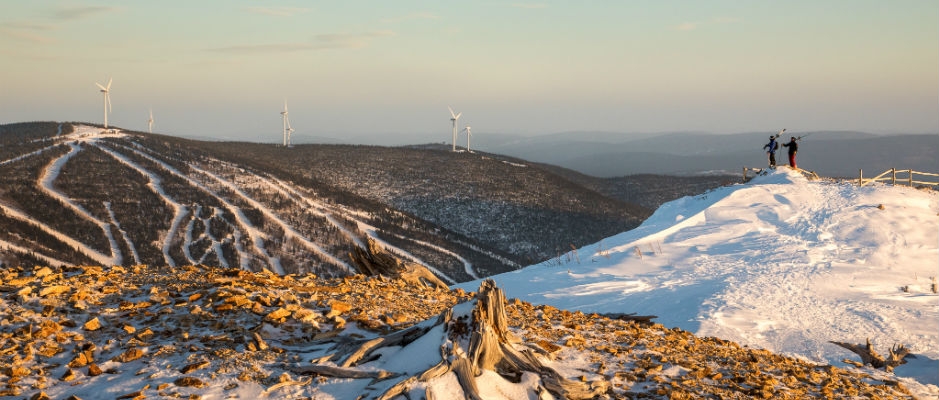
- Jamie Walter
Chic-Chocs: The Hidden Gem of Eastern Canada
Those that have grown up skiing the East have likely heard stories of the fabled Chic-Choc Mountains of Québec. These stories started when the East’s most adventurous skiers journeyed into the depths of the Gaspé Peninsula in search of this holy land—a place that looks and feels like anything but the East Coast. The alpine has the same appearance as the rounded peaks and open bowls of Colorado, the sprawling spruce forests grow similar to those in British Columbia, the small Québécois towns scattered about feel comfortably European, and the snow is in a league of its own. Word quickly spread about this mecca of skiing; now, the Chic-Chocs are considered a bucket-list-worthy destination for any East Coast skier.
The heart of the Chic-Chocs lies a seven-hour drive northeast of Québec City. The picturesque scenery along Highway 20 and Route 132 does help pass the time—the road winds through quaint seaside villages for a while, before squeezing down to a narrow strip of pavement sandwiched between the ice-filled waters of the St. Lawrence River to the left and large steep bluffs that come crashing down to the right. It’s the type of scenery that looks more like Norway than Québec.
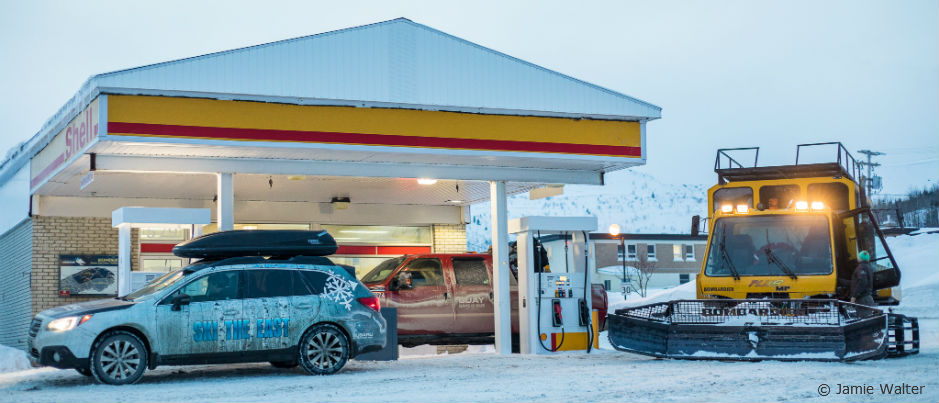
Arriving in Murdochville feels like you’ve made it to a winter wonderland. Massive three-metre-tall snow banks line the snow-covered streets and the only vehicles parked in front of the town’s only restaurant are snowmobiles. The place used to be a busy mining town, but since the mine’s closure in 1999, it has found new ways to thrive. A massive wind energy development has dotted the surrounding ridge lines with tall white structures, and the boom of backcountry skiing has begun to draw more tourists, business and residents to the area. Being surrounded with impressive-looking mountains and blessed with several metres of snowfall every season, it’s easy to tell that this place is special.
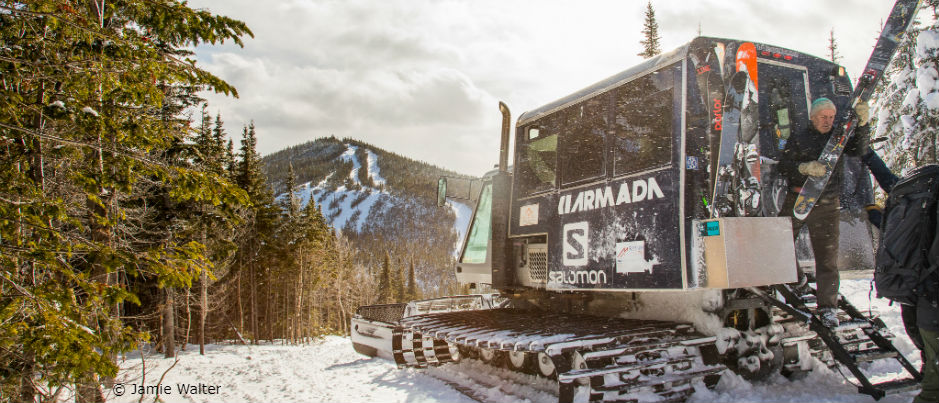
We spent the next two days checking out the local catskiing operation run by Chic-Chac. While it’s the only catskiing experience on the East Coast, they set a high standard for any operation, East or West. The hostel-style lodge is located in town and hosts breakfast and dinner for its guests, along with a bar for après-ski fun. The food was outstanding, particularly the gourmet dinners that hit the spot after a long day of skiing. Chic-Chac also packed big lunches for us in the cat, which we enjoyed during a break in their warming hut at the base of Mt. York.
Chic-Chac also boasts some amazing terrain. With two separate zones accessed by cat—Mt. York and Mt. Porphyre—there’s no shortage to choose from. The larger of the two, Mt. York, features 15 different long and steep runs, several of which contain sizeable natural and artificial jumps making the terrain a backcountry playground. The other zone, Mt. Porphyre, is closer to town and offers scenic views when you get dropped off above treeline. While the 12 runs there are a bit more mellow, they offer great skiing in well-maintained glades.
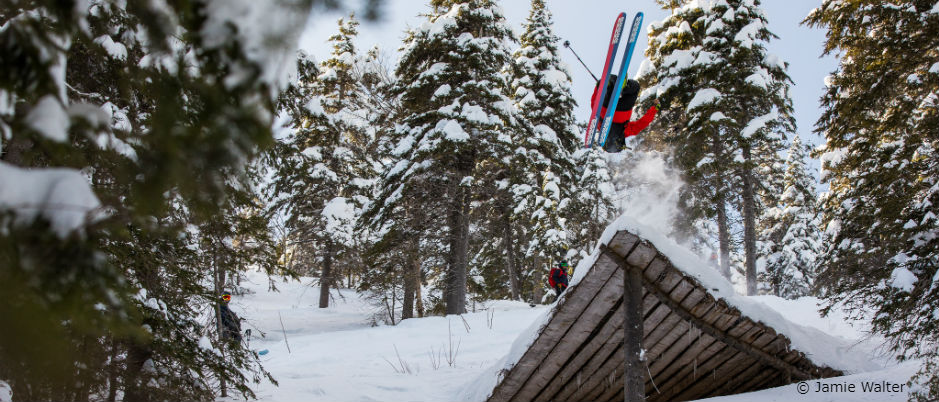
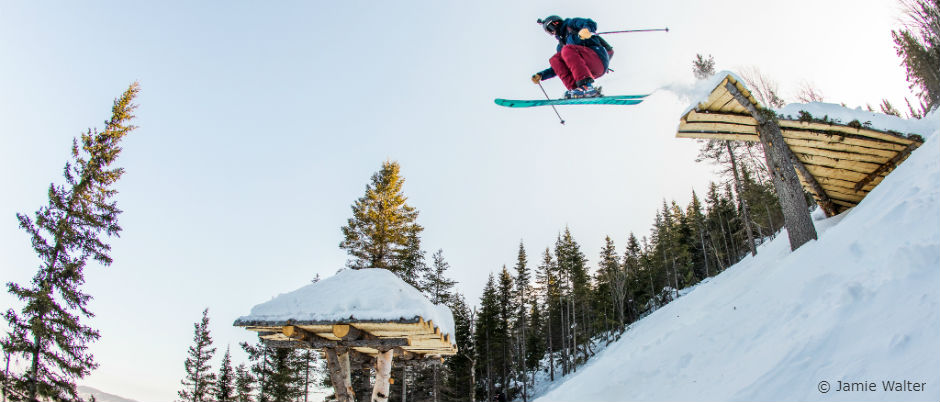
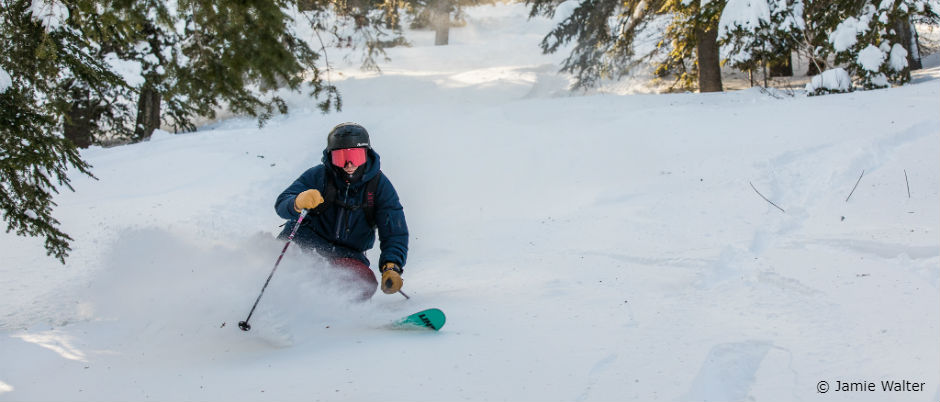
The first day of skiing started with a safety talk from our guide, Alexis Roy. He reminded us that the terrain we would be skiing is legitimate, remote backcountry and made sure we all had avalanche beacons, shovels and probes. (Chic-Chac loans avalanche safety gear to those that don’t have their own.) Once everyone was equipped, we piled into a cat and began rumbling down the 45-minute approach to Mt. York. It was a beautiful day. The sun was shining, temps were comfortable around -5°C, and there was 10 cm of fresh snow waiting for us. As soon as we dropped into our first run of the day, our expectations were blown out of the water; the trail had a great fall line that was nice and steep, the trees were perfectly spaced, and the snowpack was soft and deep. Even with a dozen of us skiing down one glade, there was enough space and fresh snow for all.
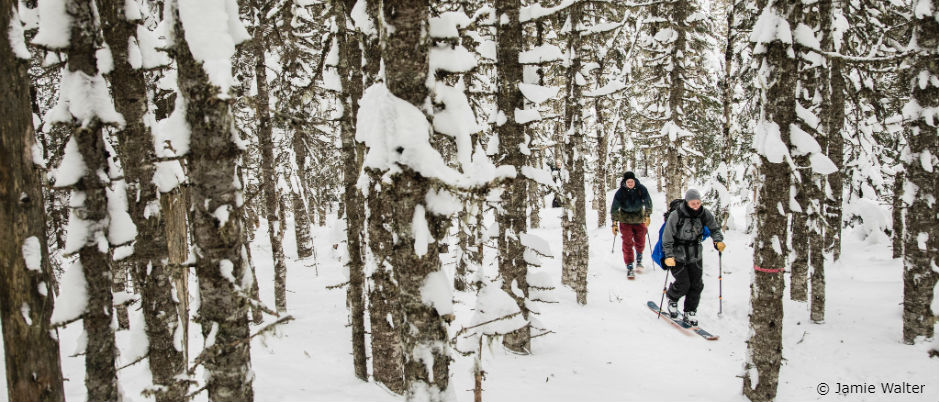
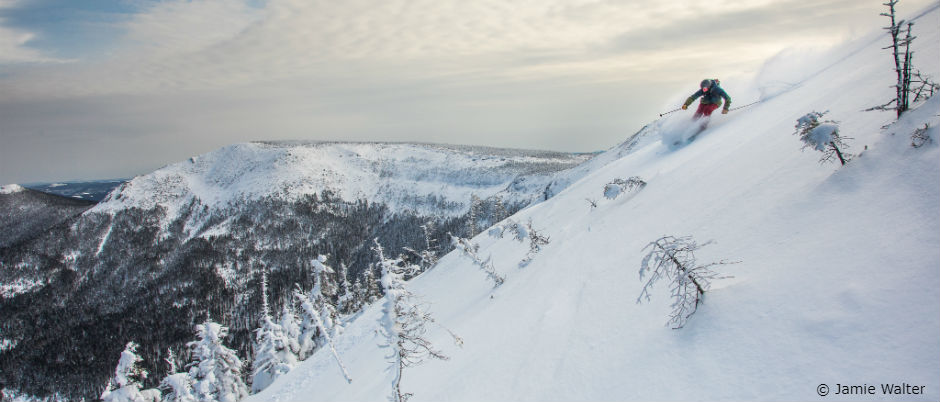
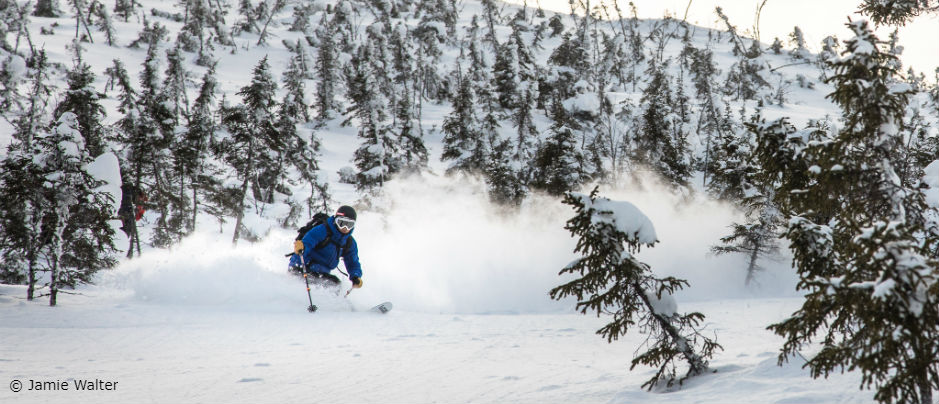
After two days of great catskiing, the next part of the trip brought a welcomed change of pace—it was time to earn our turns. We drove west from Murdochville to the Mt. Lyall trailhead. Our climb began through a beautiful evergreen forest and the overcast skies began to clear as we gained in elevation. The snow only got deeper and the views only got better as we approached treeline. Ahead of us was the summit ridge of Mt. Lyall, which offers several chutes and open faces that eventually funnel into well-maintained glades cut by the same forest engineers that worked on Mt. York. Surrounded by such prominent mountains and West-Coast-esque terrain, it was hard to believe that we were still in Québec. A quick lunch of pre-made sandwiches on the summit refuelled us for our descent, which was surprisingly long compared to what felt like a fairly easy approach. Had we not started to run out of daylight, it would have been a quick and easy spot to get a few more runs in.
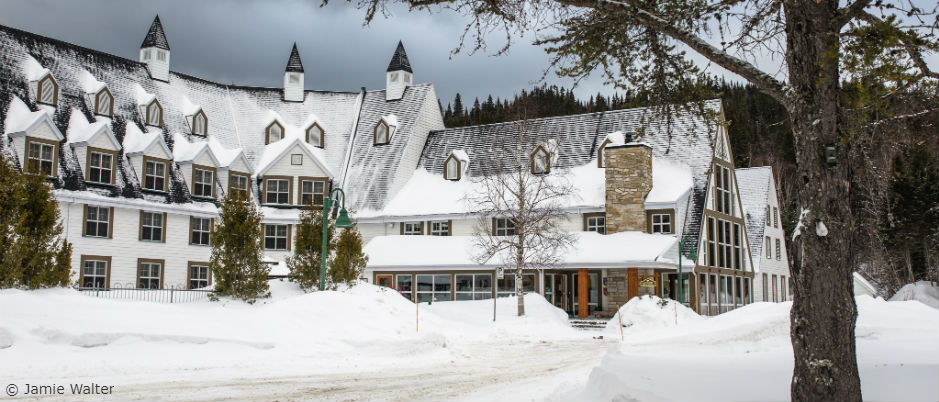
Instead of going back to Murdochville, we continued to the Gîte du Mont-Albert hotel, located just a few kilometres down the road from where we had skied. This beautiful hotel sits inside Parc national de la Gaspésie and is hands down the most convenient place to stay near the mountains. That night, we were treated to a wonderful three-course dinner with fresh soup, hot entrees and delicious desserts. We ate like royalty inside the warm and cosy hotel as fresh snow fell outside.
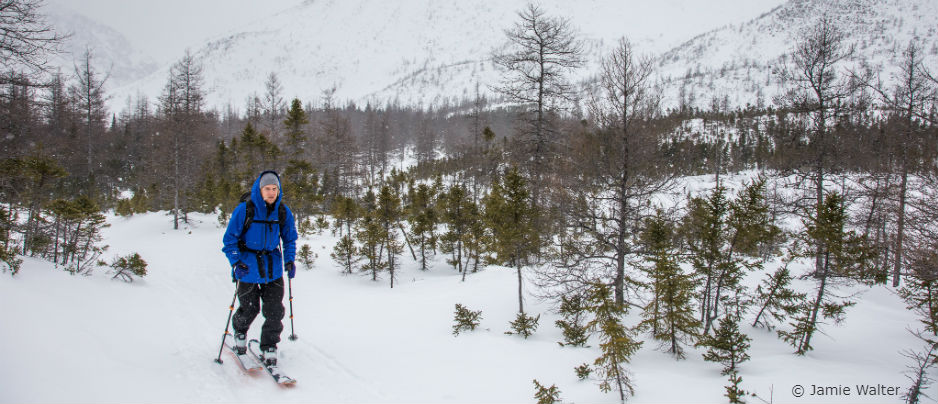
The following morning, we set out for Mt. Albert, a giant plateau with broad bowls lining its perimeter located inside Parc national de la Gaspésie. Getting there required a 5-km approach along a trail we shared with other outdoor enthusiasts, like cross-country skiers and snowshoers. We took a nice lunch break at a conveniently located warming hut at the base of the bowls. While our guides determined that the snow’s stability higher up on the mountain would be too dangerous to ski, we were quite content being in such a remote and quiet place.
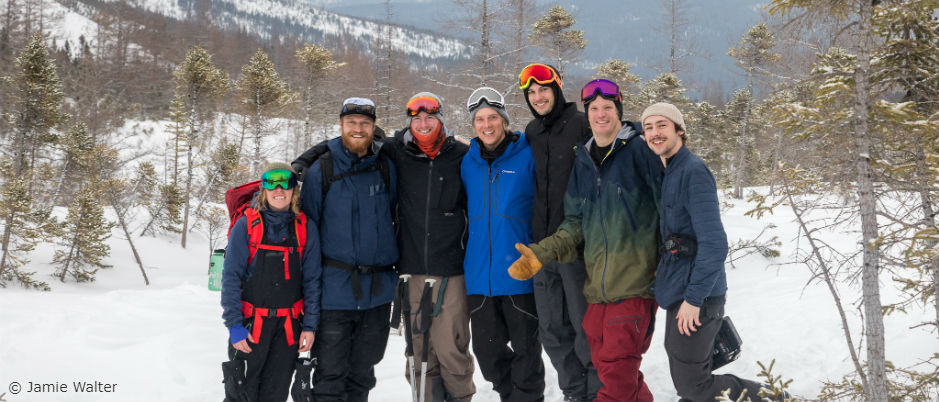
Overall, we had an unbelievable time exploring the Chic-Chocs. It was truly an experience unlike anything else on the east coast—a place where big mountains meet the always grateful attitude East Coasters are known for. We’ll certainly be making the journey back there very, very soon.
Words and photos by Jamie Walter
(0) comment